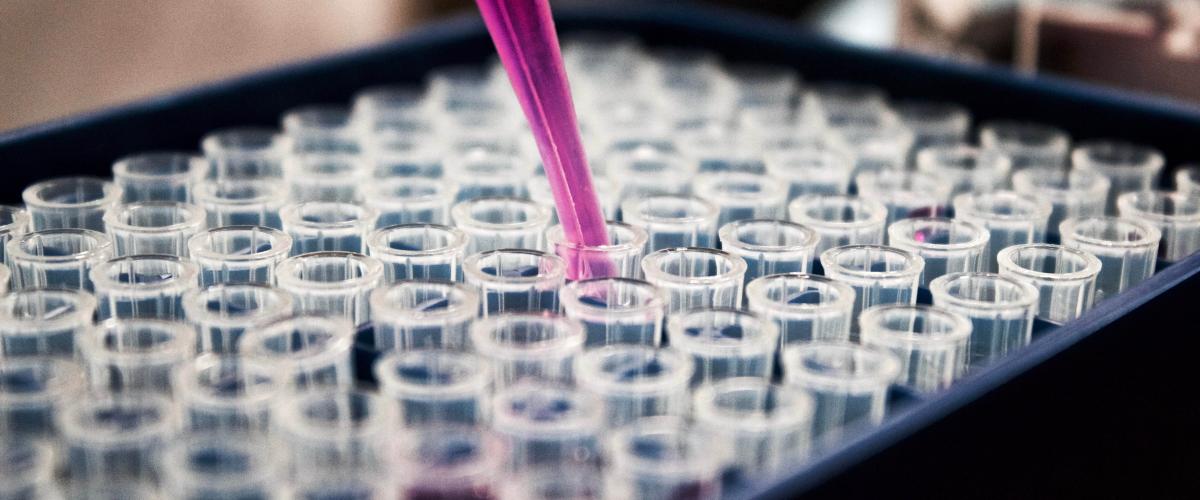
The CHSI Core Lab provides Duke scientists, clinicians, collaborators, and trainees with access to an innovative, standardized repertoire of immunologic assays to comprehensively interrogate the immune space in response to infection, vaccination, cure strategies, and trauma. The Core Lab includes a team of investigators with expertise in antibody binding, avidity, and function (Dr. Georgia Tomaras), cellular cytotoxicity (Dr. Guido Ferrari), and neutralizing antibody assays (Drs. David Montefiori and Xiaoying Shen). The CHSI Core Lab partners with the Duke Center for AIDS Research (CFAR) to provide HIV/AIDS-specific immunologic assays (https://cfar.duke.edu/cores/immunology-core).
Antigen specific antibody responses using customizable antigen-specific binding assays are provided by the core under GCLP-compliant conditions. These assays can be used to profile global changes in antibody isotype and subclass responses to infection or vaccination. A variety of species and sample types (serum/plasma, mucosal specimens) can be assessed.
Luminex-based Binding Antibody Multiplex Assay (BAMA): The BAMA has multiplex capability to profile antibody isotypes and subclasses (IgG1-4, dIgA, SCIgA, IgA1-2, IgM) for multiple antigens simultaneously (e.g., 50-100 different proteins/epitopes).
BAMA-Avidity Index (BAMA-AI): The BAMA-AI assay is also a multiplex assay and can be used to profile the strength of these antigen- antibody interaction using specific peptides and a sodium-citrate step.
Peptide microarray: Peptide microarray can be used to determine the precise linear epitope mapping across clades using minimum specimen volume.
Granzyme B flow-based cytotoxicity assays: In our assay platform, active Granzyme B (GzB) is identified by its ability to cleave a selective peptide-linked fluorogenic substrate containing a GzB recognition motif. Fluorescence is conferred upon hydrolysis of the substrate, thereby producing a signal that can be used to directly identify individual cells targeted by the cytotoxic effector cells. Enumeration of these cells by high-throughput flow cytometry provides a rapid and quantitative measure of cytotoxic activity as mediated by NK cell, T cell, and ADCC responses.
Luciferase-based cytotoxicity assays: The principle of this assay is based on the utilization of HIV-1 Infectious Molecular Clones (IMC) that either represent a full length infectious HIV-1 isolate or designed to encode HIV-1 env genes of interest in cis within an isogenic common backbone that also expresses the Renilla luciferase reporter gene and preserves all viral open reading frames. The luciferase reporter is under the control of the HIV-1 Tat gene. Upon HIV-1 infection of any cellular subset of interest, expression of Tat during HIV-1 replication will induce expression of the luciferase and the presence of infected cells can be easily quantified as Relative Luminescence Units. In the presence of the cytotoxic cells of interest, the elimination of infected target cells can be quantified after a minimum of two hours by evaluating the residual luminescence units.
Infected cell binding antibody assays: The measurement of plasma antibody or monoclonal Ab binding to HIV-1 envelope expressed on the surface of infected cells is by a flow-cytometry-based indirect surface staining according to methods and referred as Infected Cell Antibody Binding Assay (ICABA). This step represents the first event that takes place in the recognition of infected cells before Ab can engage Fc-receptor bearing cells to mediate Fc-related functions (phagocytosis and antibody-dependent cell-mediated cytotoxicity).
Interferon Gamma (IFN-γ) Enzyme Linked ImmunoSpot (ELISpot): The principle of this assay is based on the detection of the IFN-γ released by the T cells upon stimulation with antigens of interest, and quantified as the formation of spot son a solid membrane. Each spot represents an antigen-specific T cell.
Phagocytosis: Antibody-dependent phagocytosis assays can be used to test the ability of vaccine or infection induced antibodies to engage FcR on primary monocyte/macrophages in addition to recognition of virus particles.
Virion capture: Virion capture assays can distinguish the capacity of different antibody specificities to recognize infectious and noninfectious virus particles.
FcR Binding by BAMA: Multiplexed human Fc receptor binding assays are a modified version of the binding-antibody multiplex assay (BAMA). Briefly, antigen-coupled beads are incubated in the presence of titrated serum, followed by a detection tetramer constructed from biotinylated FcγRs (e.g. FcγRIIa H131, FcγRIIIa F158, etc) and streptavidin-PE. Fluorescence intensity is resolved using the flow-based Luminex 3D Platform.
TZM-bl Neutralization assays: Antibody-mediated neutralization of HIV, SIV, SHIV, and SARS-CoV-2 is measured as a function of reductions in Tat-regulated Firefly luciferase (Luc) reporter gene expression after a single round of infection in TZM-bl cells. This assay can be used to assess the magnitude and breadth of neutralizing activity of serum samples and monoclonal antibodies from infected individuals. We also offer neutralizing antibody epitope mapping, virus infectivity measurements and neutralization tier phenotyping services.